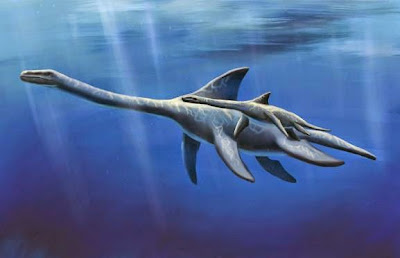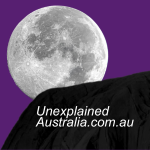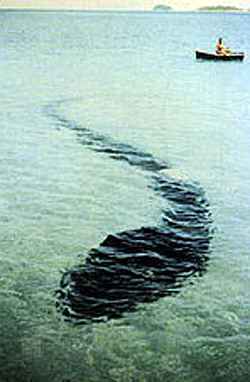
By Murray Byfield
Every country has its legends about Sea Serpents and Lake Monsters, the most famous of course would be “Nessie” of Loch Ness in Scotland. But it may come as a surprise that Australia has had quite a few sightings and accounts of mystery Aquatic creatures.
The first account is from Hook Island in Queensland, most people interested in Cryptozoology are familiar with the famous Hook Island Sea Monster photo (see article here) this account however goes back further almost 20 years earlier.
In 1936 Mr. Jack Frisch, well known fisherman and owner of the launch “Lomii”, caught a sea serpent on a set line in deep water off a coral shelf whilst fishing with his grandson Ted. No stranger to the sea or its creatures Jack had spent many years as a fisherman.
The following story appeared in the Bowen Independent, Mon 18 May 1936:
About eight feet long, it was an ugly-looking customer, and looked like an artist’s conception of a sea serpent, with its head clear of water and its body arched in two places in approved fashion. Young Ted must have thought he was living a dream and that one of the serpents which used to haunt the sands of Margate and Brighton in the old English comic papers, was returning to haunt him.
However, he decided that it was too big a job for him to handle and yelled for Pop to give a hand, the latter going into the fray with a “silencer,” which put the slimy one to sleep for 30 hours. It. was kept alive with the objective of bringing it to town, but on the run to Armit, Island was drowned in the heavy seas, when being towed behind (the safest place for the unknown), and between Hayman and Armit. broke adrift.
The dinghy was quickly – launched, but the monster sank, to the great disappointment of the crew, who were keen to land the proof of their story. Describing the catch, Mr. Frisch said the head was after the type of the popular conception of a serpent, between that of a snake and an eel. It was about fifteen inches from the tip of the snout to the back of the head with a bull-like neck, thick and round behind the head, the neck here being about ten to twelve inches through, the knob of the head being very little smaller. The neck tapered to a body about nine inches in diameter, and. further tapered to a flat eel-like tail. On its back from the nock for the length of the body there arose at will a fine web about three inches high. A peculiar feature of this web was that it was transparent and had no apparent support in the nature of ribs, and was distended when the monster was angry (which it could be imagined, was fairly continuous).
The head was an arresting feature, being a knobby affair, with the eyes set well back in a beak snout, the latter protruding six or seven inches, with a lower jaw a little flatter than the upper part which was a trifle rounded. The mouth opened on the groper or cod principle and revealed a yawning black cavity, and contained teeth up to an inch long thin like those of a comb, and set irregularly all over the month, varying in thickness and length. The colour inside the mouth was black, and the body was beautifully marked with fine spots. It would be interesting to bring this before the notice of Museum authorities.
Some time ago, it may be remembered, a party of youths saw what they claimed to be a sea serpent off Thomas’ Island, but their story was given little credence. However, reports at different times from several parts of the world prove the existence of such a species, and the Great Barrier Reef might just us well be a breeding place—who knows?
The next account is from the Clyde River at Batemans Bay from The Mudgee Guardian and North-Western Representative, Monday 20th of July 1931:
Two fishermen, G. Patrech and Bill Lawler, declare that they saw a sea-serpent at the mouth of the Clyde River, Batemans Bay on Friday. The creature broke the surface eight feet from their boat, and, diving, appeared three times more before finally disappearing. The men describe It as being 12 feet long, and two feet and a half in diameter, with a flat head with white Jowls. The body was brown.
Launceston Examiner Wednesday 12th August 1891, the following description came from the quartermaster of a ship that arrived in Tasmania from New Zealand:
Nelson, a quarter-master, had been at the wheel and was standing on the main deck about 6’30 when his attention was attracted by observing an extraordinary looking object rising out of the sea on the leeward bow about a mile distant. The monster, which resembled for all the world a huge eel, came straight out of the water to a height of about 30ft, and then receded. A moment afterwards it rose again, and ended again gilded beck. Two or three times more It came up, and a height of about 30ft of its body was visible. The fish, which must have been 60ft in length, had a good-sized head, and it showed two fins, something like wings, each about 10ft long. Its back was black, the colour of the body being pure white, and each time it disappeared a distinct splash was noticeable. Each time it rose it was nearer to the ship, and when it reappeared finally, Nelson says, it must have been only 100yds or thereabouts from the vessel, He has been at sea for 25 years, and assures us that in all his experience he never saw such a singular looking object. It was broad day-light when he saw it, and he is positive that it was not a whale.
Sea Serpent at Southampton – Burra Record, Wednesday 7th June 1933.
It was learned on the arrival of the T.s.s. “Largs Bay” at Southampton, that great excitement had been occasioned when a sea serpent was sighted off Aden. According to the eye witnesses the monster was about 20ft long and was twice seen to jump-partly out of the water about a cable length from the ship. The creature looked like an elongated fish with a wide bulging head and a long spike or tongue projecting from the snout.
Sea Serpent at Narrabeen -The Hillston Spectator and Lachlan River Advertiser Thursday 20th November 1930.
What is claimed to be a sea serpent was seen off the beach at Narrabeen early on Tuesday morning. It was about 70 feet long with a tail resembling a large eel, which churned up the water in the vicinity. The’ monster’ was observed by Mr. and Mrs Parrington, who at first took it to be the mast of a ship, but observation with field glasses quickly dispelled that idea.
Sea Serpent near Noumea – Manilla Express Thursday 1st Nov 1923
Officers of the French mail steamer “Pacifique”, which arrived in Sydney last week, reported that the sea serpent had been seen again in the waters near Noumea. They declared it was about 125 feet long, and was sighted by M. Martin, wireless operator on -the steamer, near the Loyalty Islands in June.
In September two, native women at Noumea were crossing a bay in a small boat when the serpent rose about 80 yards away from them. It made a whistling noise and threw up into the- air jets of water and black vapor. Its head stood 30ft. out of the water, and had the same shape as that of a seahorse, with long hair on the mane. The women immediately turned their craft homewards, again.
On September 30, the monster was seen two miles from Noumea, its body rearing from the water like a mast.
The Shoalhaven News and South Coast Districts Advertiser, Sat 10th March 1934.
A correspondent at Ulladulla writes to the ‘Milton Times’-— We know all about sea serpents, but?
Last Wednesday morning the Tetley brothers were going down the school road to the sawmill, when something in the harbor attracted their attention— some object standing up out of the water, just off the end of the wharf. At first it appeared to be a limb of a tree but while they watched it raised itself until at least six feet of it appeared, and at the distance it looked like a big dog’s head, and the head was waving about after the manner of a snake. They hurried to get a closer view, but the Monster didn’t wait, and before they got close enough it disappeared under the water. But they both swear to it being an animal, a fish, or at least something alive, and now all1 the fishermen’s launches are armed with harpoons, hoping for a strange catch.



